Working Environment of the Service Industry
Industries where services are provided from person to person are experiencing dramatic labor shortages while their presence in the overall industry is increasing.
We consider the service industry to be the industries that are provided from person to person, such as retail, food service, transportation, and welfare. Although these industries are essential to our daily lives as social infrastructure, as service workers are also called essential workers, they are still under a heavy burden as unprecedented labor shortages have forced the closure of stores and offices and the need to change businesses in ways that were not planned. Now that the Corona disaster has passed and the flow of people has returned to the city, the lack of return of hired workers is only a small part of the story, and the entire industry is undergoing a transition with massive disruption, but the deep-seated labor environment challenges have not been resolved.
4 million manpower shortage in the service industry alone.
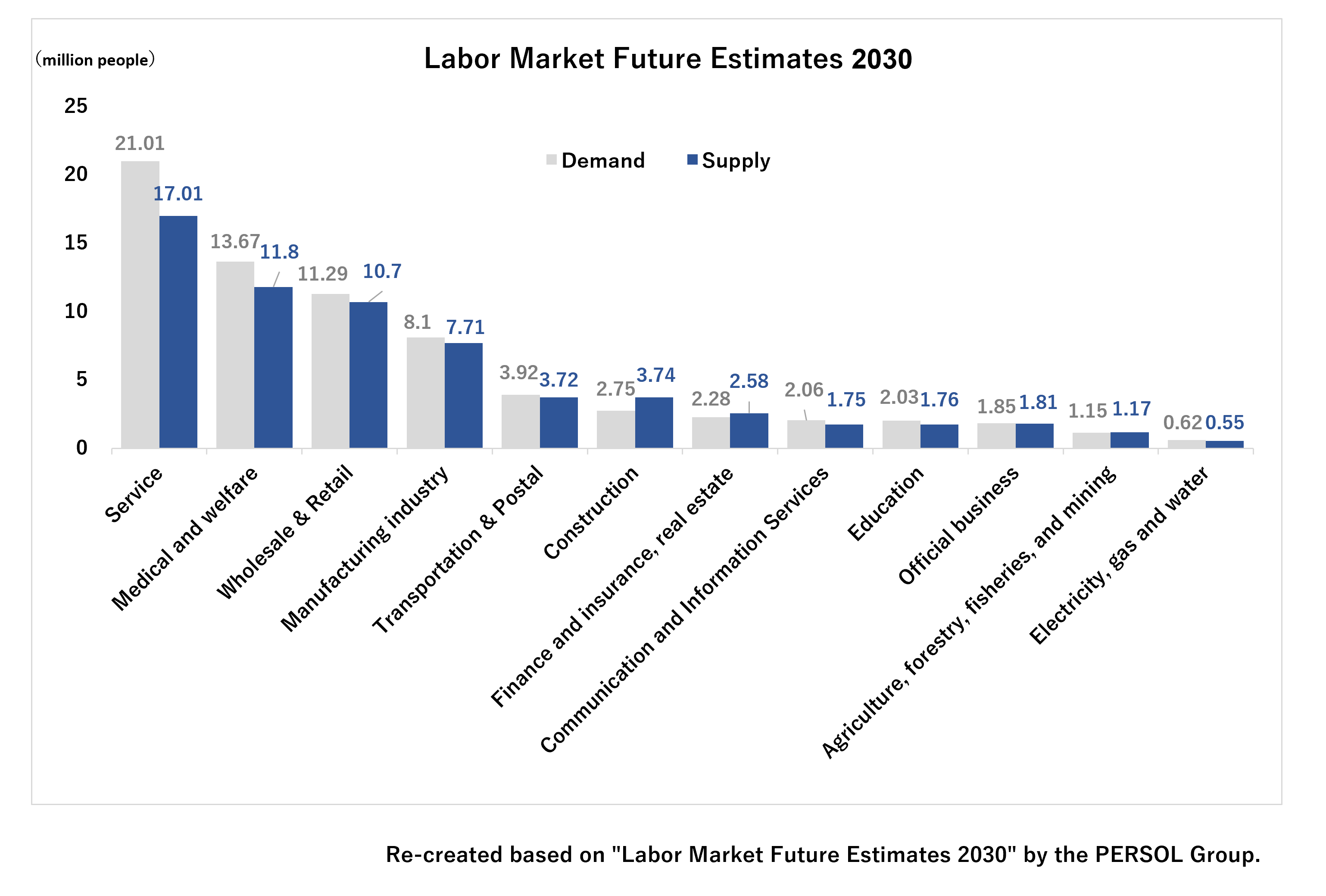
In response, companies are taking labor-saving and labor-saving measures as if they were competing with each other. Typical examples include the introduction of self-checkout systems in the retail industry, the use of AI in ordering and inspection systems, and in the restaurant industry, the deployment of robots for cooking and serving food, and the introduction of touch panel systems for ordering products. In the backyard, where customers cannot see what is going on, IT tools are being introduced one after another for inventory management systems, employee shift and attendance management, and human resource management to promote greater operational efficiency.
In addition to labor-saving and labor-saving measures, measures to secure human resources are being considered in various fields. For example, the government is actively promoting the expansion of long-term employment of specific skills. In the Corona Disaster, there has been no movement for some time to secure labor from outside of Japan, but the government is moving forward at a rapid pace to promote the use of non-native human resources. In addition, systems related to employment support, such as the rehiring of retired seniors and reskilling of housewives, can also be seen. There is also a trend toward spot workers becoming the mainstay of operations in industries such as the restaurant industry.
While it is expected that moves to secure labor and improve operational efficiency will continue to increase, it seems unlikely that the labor shortage itself will be resolved.
60% of all workers are service sector workers

The majority of service sector workers consist of non-regular employees.
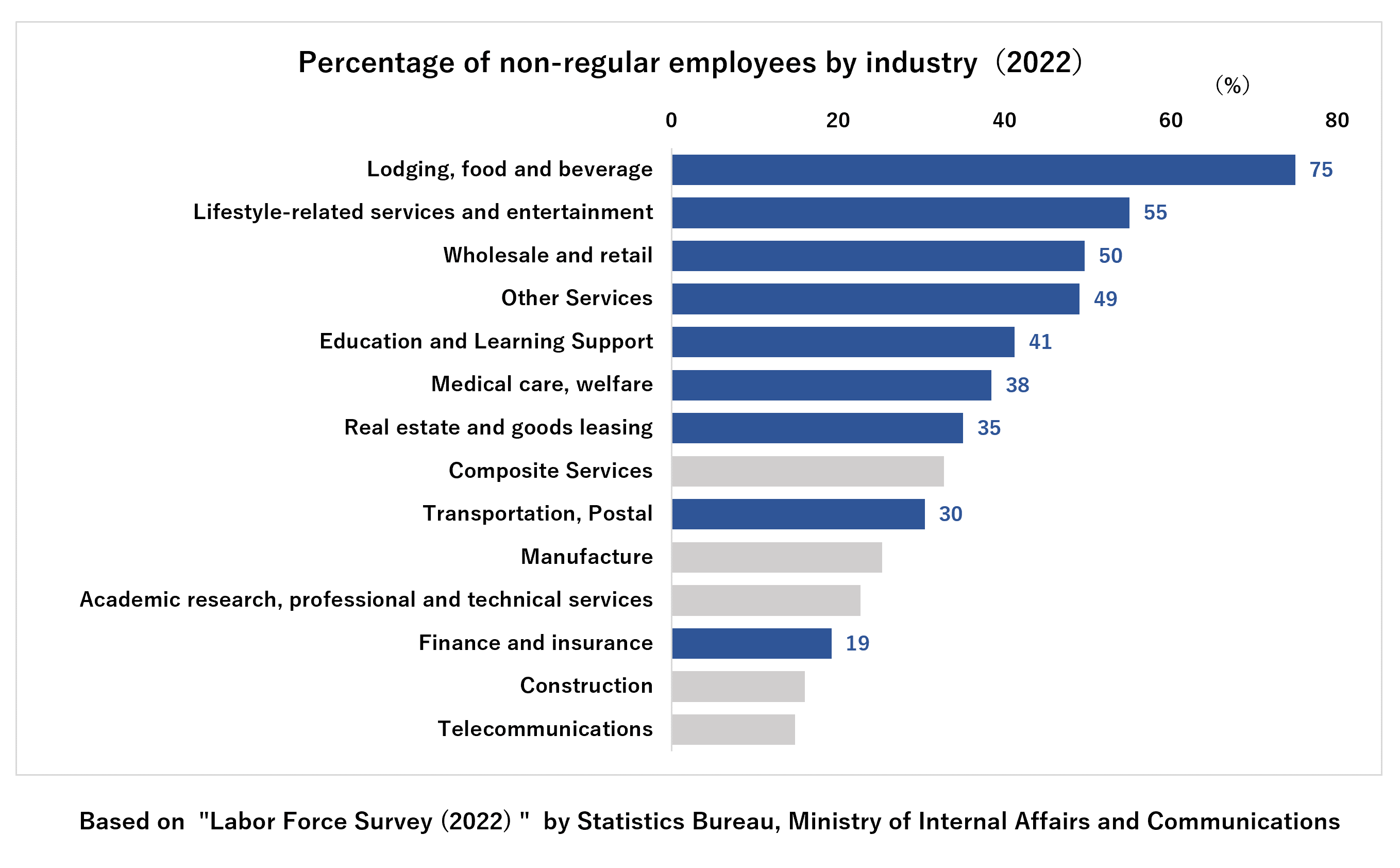
In industries that are provided from person to person (blue graph), there are many examples of non-regular employees in particular serving as the mainstay of the workforce. As shown above, more than 50% of the workforce in the top three industries is made up of non-regular employees, led by 75% in lodging and food services. In some small restaurants and retail stores, part-time or casual employees serve as "limited-time store managers (base managers)," in which case the scope and volume of work they are entrusted with is almost the same as that of regular employees.
Low wages and high turnover rate
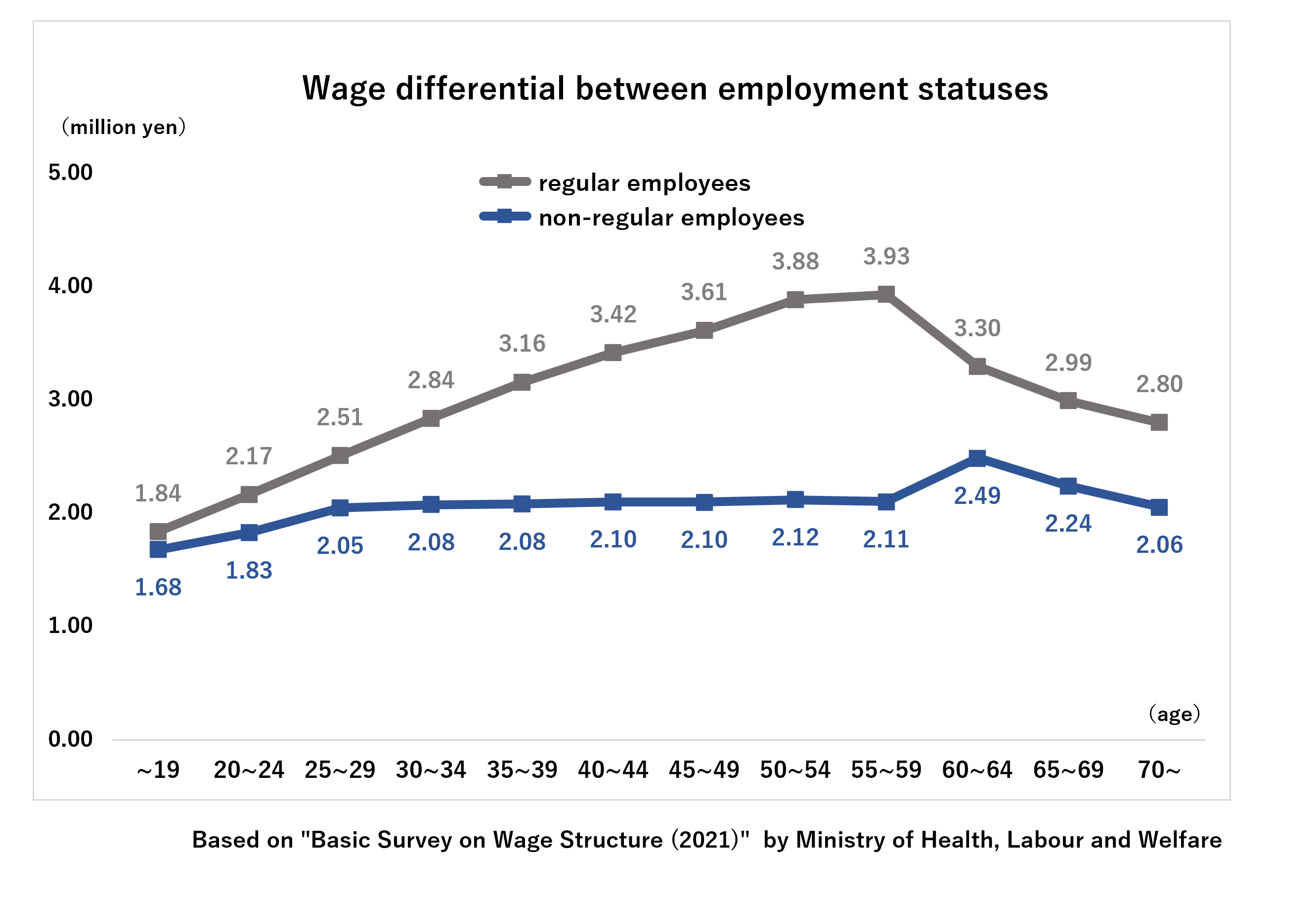
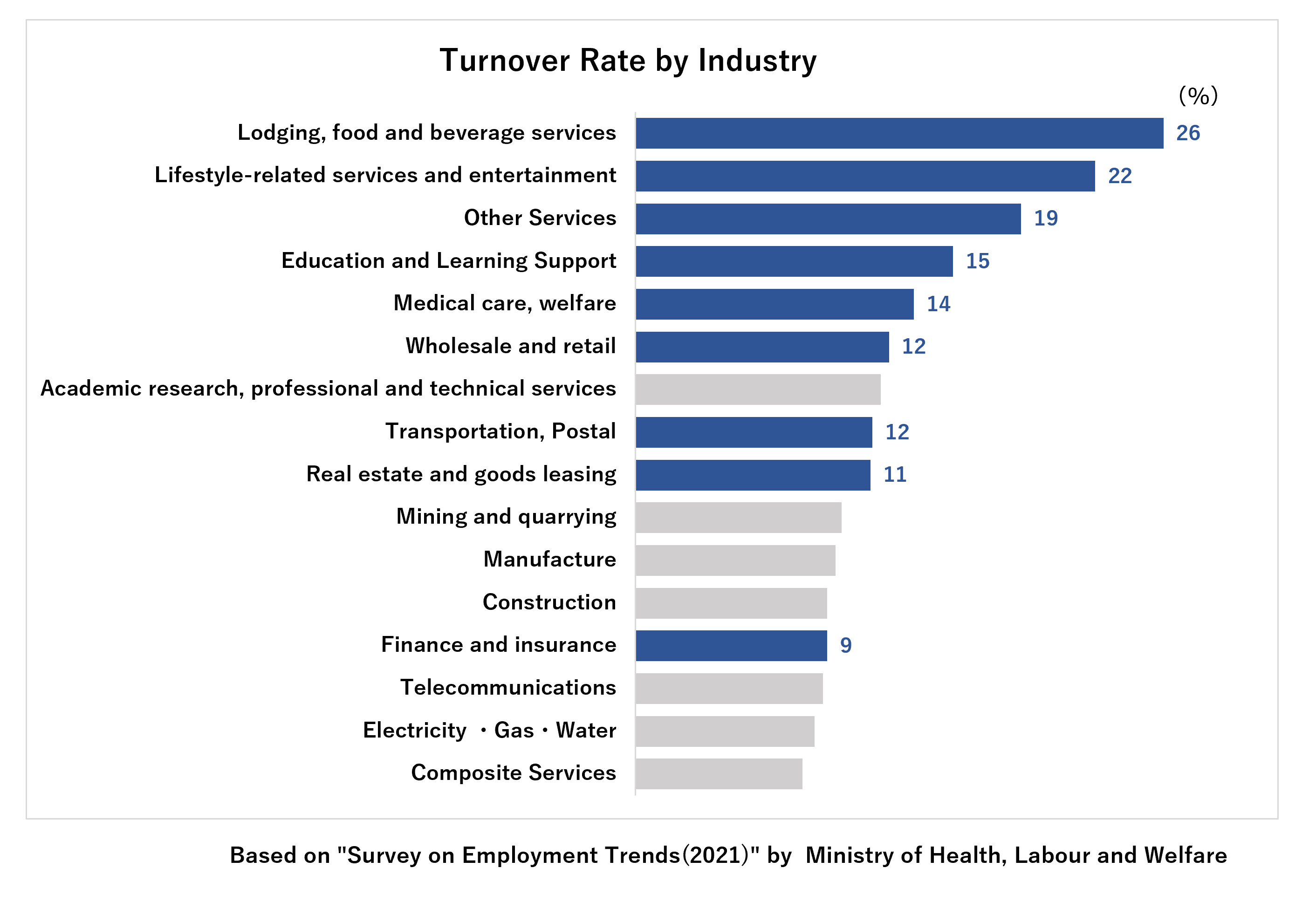
There is no end to the number of cases where workers leave their jobs early because they are not taught satisfactorily or do not fit in with the workplace, even though they have taken the trouble to join a company or enter the workforce. In order to increase the added value of the service industry, we believe it is essential to create an environment that encourages the growth of each individual in the company and rewards them according to their skills and job performance.
In 30 years, the number of non-regular employees has more than doubled
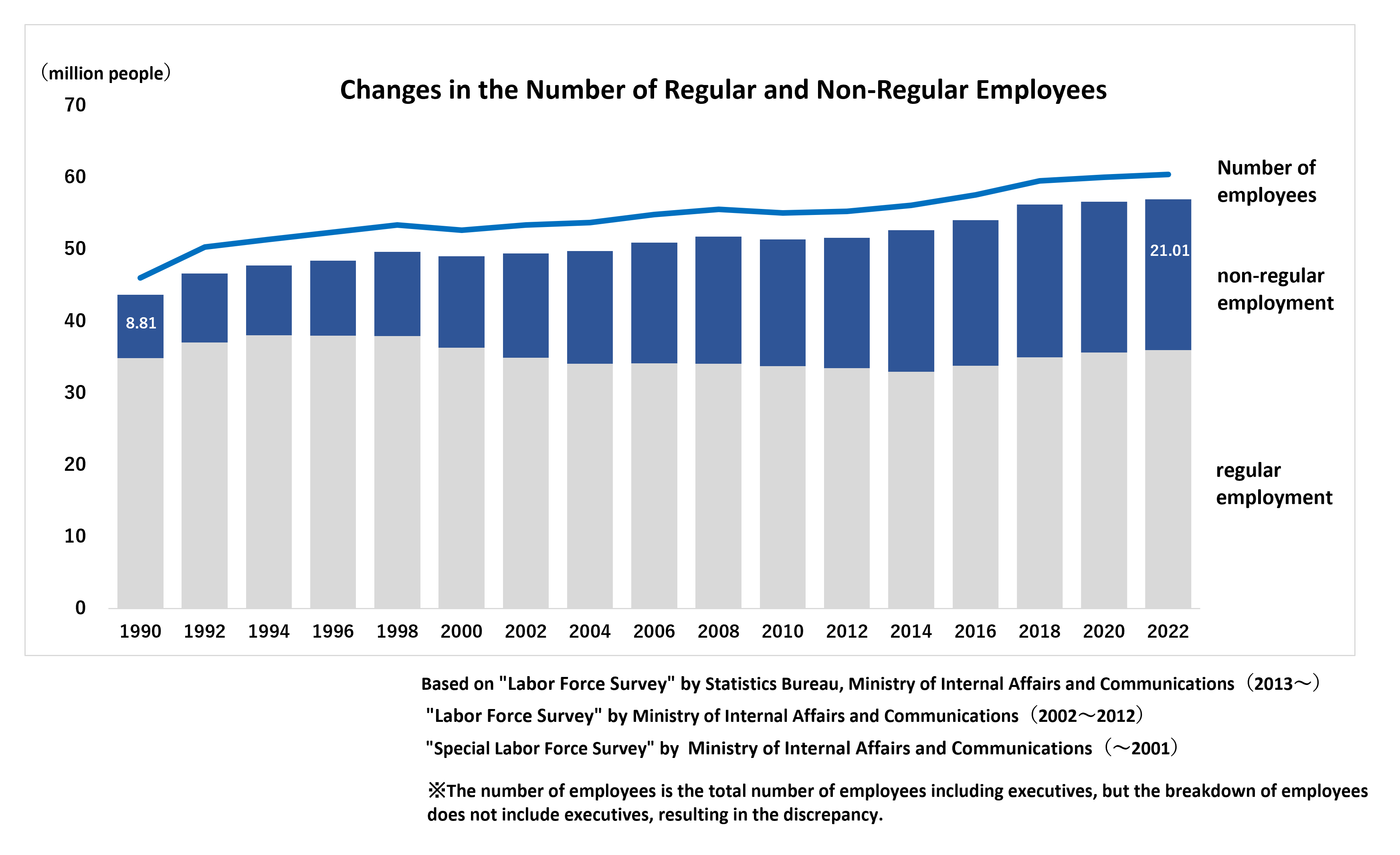
We are close to the frontlines and management of the service industry and continue to pursue the evolution of our services to realize an environment in which employees can work with vitality.
Grand First Kandakonyacho 5F,
15 Kandakonyacho, Chiyoda-ku,
Tokyo, 101-0035
Japan
"Privacy Mark" licensed vendor.


